

Book Now to Experience
Acne Treatment
1 Minute Self-Registration
Date should not be before minimal date
Author: Leila Tan|Updated: 24 April 2024
Acne is frequently caused by puberty. It normally affects about 8 out of 10 preteens and teens. Yet not all of the blame for those bothersome pimples can be placed on hormones as there are many reasons why one would get acne. It's intriguing that even if you didn't have never experienced acne as a teenager, you can acquire it as an adult. Adult breakouts differ from the ones you had in high school, despite the fact that the pimples look the same. Teen acne normally affects the upper part of the face, whereas adult acne typically affects the lower half. Adult acne is also considered as more severe acne and manifests as unhealable cysts or "beneath the skin" pimples. So what causes this acne? How can you heal the acne on your face? What is the best treatment for acne? Well, today you will find the answers to these questions right here!
1
First, what is ACNE?
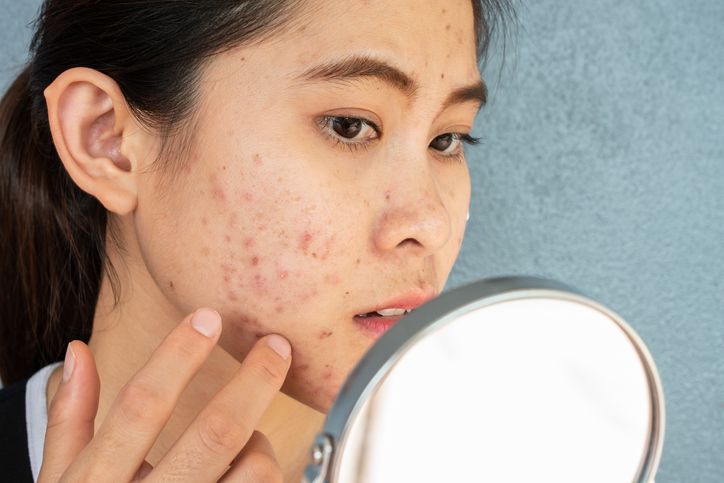
Acne also called as acne vulgaris is a skin issue that occurs when the hair follicles which are known as minuscule openings in the skin are clogged.
Sebaceous glands are tiny glands that are located close to the skin's surface. These glands are joined to the hair follicles, which are the tiny openings in your skin from which a single hair emerges. The glands start to produce too much sebum than the unusual amount which eventually causes acne to present. Dead skin cells and extra sebum combine to form a clog inside the follicle.
A whitehead develops when a blocked follicle is located just below the skin's surface while a blackhead can also be produced if the blocked follicle is exposed to the skin. The clogged follicles can subsequently get contaminated and infected by normally non-harmful skin-dwelling bacteria, leading to acne such as papules, pustules, nodules, or cysts.
The few common types of acne are blackhead, whiteheads, and other types of acne on the skin. The face, chest. Shoulders, and back are the areas where breakouts occur most frequently. While less severe or mild acne cases may respond to over the counter medications, more severe cases should be seen by a dermatologist.
2
What are the TYPES of acne?
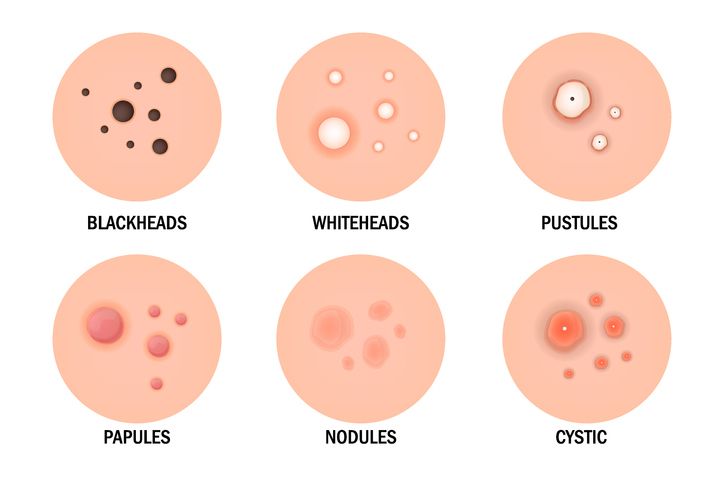
1. Whiteheads : One of the most prevalent types of acne are whiteheads which are also referred to as "closed comedones." Little to medium-sized lumps typically white or flesh-tone in color will form on the skin as a result. So if you have any white medium sized lump on your face then you can be certain that it is a whitehead. As dead skin cells and sebum combine to plug a pore it results in whiteheads and this blocked pore develops pus inside and is covered by a layer of skin. This white pus is what gives this acne its white appearance. Picking at pus-filled whiteheads merely serves to clog other pores with debris and bacteria so it doesn't matter how tempting it is to pick your acne, don't ever do that. Whiteheads are regarded as noninflammatory blemishes. Thus it's unlikely that these pimples will cause you to swell and turn red.
2. Blackheads : Blackheads, also known as "open comedones," are so named because they resemble dark patches on your skin. The most common areas of the body affected by blackheads are the face, neck, back, and chest. Blackheads are brought on by clogged pores, just like whiteheads. The clumps of oil and skin cells are exposed to the air, unlike whiteheads and as the clogs come into touch with oxygen, they undergo a color change that gives them their dark appearance. It is known that blackheads can affect anyone at any age although they frequently affect teenagers. Blackheads are also regarded as non-inflammatory because they are really just extremely clogged pores that do not have any redness or infection. In other words, unlike certain other acne blemishes, they won't be uncomfortable and red.
3. Papules : An inflammatory lesion is what is called an acne papule which is more frequently referred to as a zit or pimple. On the skin, it appears as a slightly elevated red bump. Papules develop when your pores become blocked by too much oil or dead skin. The walls of your pore may break as a result of pressure building up inside the blocked pore which eventually allows the bacteria to move into the nearby skin. After a few days of the appearance of papules it gradually develops into pustules which are pimples with pus inside either white or yellow in color. A zit can only be squeezed during this time. A papule won't go away by trying to pop it, instead, it'll probably get worse and cause a scar.
4. Pustules : In short, pustules are papules that swell up as your immune system reacts. Pustules have the traditional pimple appearance because of the white or yellow cap that forms on top of the red bumps. Pustules can develop everywhere on the body, although they most frequently occur on the face, neck, shoulders, and back. Controlling the sebum production of your skin is one of the greatest strategies to avoid pustules. Sebum or your natural skin oil is healthy and essential but too much of it can block the pores and causes breakouts including pustules.
5. Nodules : Nodules are known as a severe form of acne and it can be challenging to treat. This type of acne resembles papules in appearance but originates deeper inside the layers of your skin which makes them difficult to cure and almost impossible to pop. Usually, hormones, diet, or the presence of bacteria, dead skin cells, and sebum in pores will be the cause of this acne. Nodular acne caused by bacteria can emerge anywhere at any time while nodular acne caused by hormones normally appears on the lower part of the face, along the chin and jawline, and usually coincides with your monthly cycle.
6. Cysts : Another severe form of acne that develops deep within your skin's surface is cystic acne. Like nodules, cysts resemble deep, red lumps. Cystic acne frequently appears on the chin, but it can also affect other parts of the face including the arms and back. Your first chin cyst might not be your last one unless you undergo treatment because it frequently reappears in the same spot. Stress, hormones, and food triggers are common contributors to cystic acne. Diet is not likely the only factor causing acne as severe as cystic acne. But unlike nodules, cysts are filled with pus or other liquids and feel mushy to the touch. They can be extremely sensitive and painful in either case.
7. Milia : Milia is a prevalent dermatological condition that results in small, white, cystic bumps underneath the skin's surface. Cysts refer to sacs that are filled with fluid that develop beneath or within the skin. Keratin is the protein responsible for preserving your hair, skin, and nails, however while it gets stuck below your skin, it causes tongue bumps to shape. The face is the most prevalent area where milia can be found. While they do not pose a threat to health, they may affect one's appearance. After a few months, milia typically vanish on their own.
3
What causes the ACNE?

Heredity
In patients with acne, a strong family history is typically present. Both parents may own the same genetic components for acne or various ones. For instance, one parent may pass on a hormonal situation which makes you zits-prone, while the opposite passes on a more potent inflammatory reaction to bacteria or different genetic elements. A family history of acne has also been shown to be a predictive factor on its breakouts in young people.
Food
Parents warn teenagers to stay away from junk foods such as pizza, greasy and fried foods,all over the world. While some of these foods may not be excellent for overall health, they don't cause acne or make it worse. Studies show dairy products and high glycemic foods, however, can trigger acne.
Dirt
Some individuals have more oily skin than others . Sweat does not cause acne. There is, though, an increased buildup of bacteria after exercise, so it is advisable to shower. On the other hand, excessive washing can dry and irritate the skin.
Hormones
Most women break out cyclically. Fluctuations of estrogen, progesterone and testosterone can cause zits and pimples to pop up. Normally, those fluctuations occur commonly during menstruation cycles, pregnancy and menopause. All through these times of multiplied hormones, the body produces extra sebum, an oily, waxy substance. Some oral contraceptive pills help to relieve acne but some may make acne worse. Ask your doctor which is best for you before consuming one.
Cosmetics
Most cosmetic and skin care products are not pore-clogging (comedogenic) could clog pores which eventually trigger a breakout. Zits cosmetica generally results in a rash-like breakout that manifests as small pink or red bumps. Any product that has Acne cosmetica can cause whiteheads, blackheads and pustules, too. Those listed as “water-based” or “oil-free” (non comedogenic) are better choices for makeup.
4
Perfect Aesthetics Acne treatment - What is it?
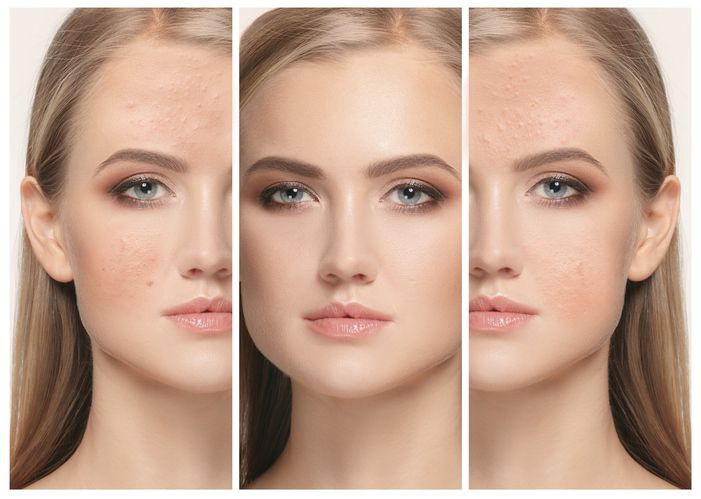
Perfect Aesthetics introduces a remedy designed for acne-inclined skin - The Acne Treatment. First, the twin spiral suction plus drainage era simultaneously exfoliates lifeless pores and skin cells and unclogs pores, calming acne inflammation and infection. Next, a hydrating serum is infused into the skin to balance the sebum secretion and sell collagen production. without extra oil, future pimples breakout becomes unlikely. The acne treatment targets acne, blemishes, blackheads, whiteheads, pockmarks, enlarged pores, dehydrated skin, and acne scars and dull skin tone.

Book Now to Experience
Acne Treatment
1 Minute Self-Registration
Date should not be before minimal date
5
What are the BENEFITS of this treatment?
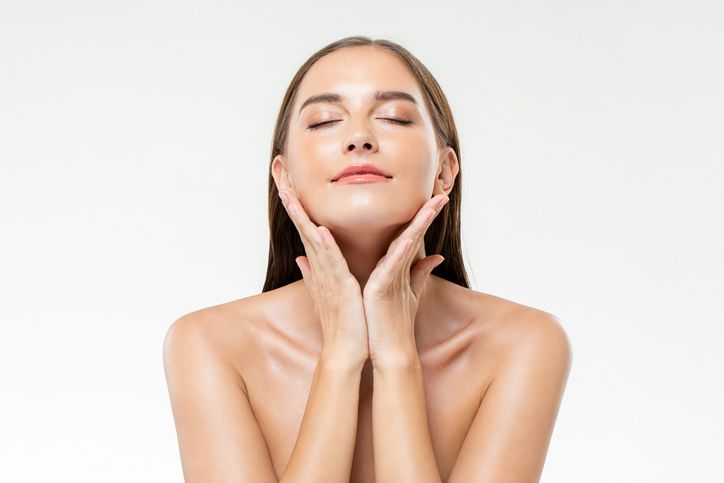
Removes Dead Skin Cells
To prevent future pore clogging, twin spiral suction and drainage technology remove excess dead skin cells and pores.
Hydrating Essence
The moisturizing serum is of medical-grade and can reach the skin's lowest levels to hydrate and nourish the skin tissues while also reducing acne-prone skin's sensitivity. Moreover, it calms the sebaceous glands to stop excessive oil production.
Visible Results
You'll see less outbreaks, scarring, and any other types of acne as the treatment progresses. Experience brighter, fuller skin that is healthier, more moisturized, more radiant, and less shiny!
Non-invasive Treatment
Since the acne therapy is non-invasive, oral antibiotics, surgery, incisions, injections, or acne medication are not required. According to our in-house beauticians, the majority of people with moderate to severe acne are candidates for this therapy.
6
How does this treatment WORKS?
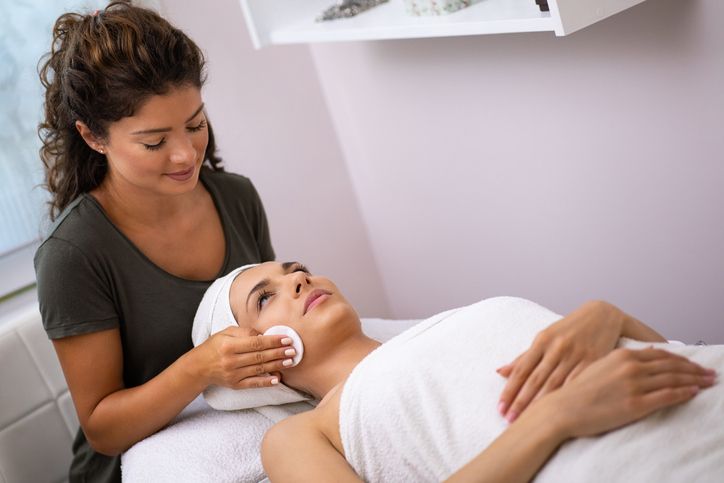
Step 1: The consultant will outline the procedure's steps and theoretical underpinnings. The beauty therapist then performs a patch test to make sure the probe hasn't caused any irritation.
Step 2 : The vacuum microdermabrasion and deep cleaning process is started by the twin spiral suction/drainage probe. Exfoliation is used to remove dead skin cells, oil, and grime that have been trapped in the pores and on the surface of the skin. The acne inflammation and infection should gradually subside if the pollutants are removed.
Step 3 : To balance the water-to-oil ratio, calm the oil glands from future overproduction of excess oil oil and promote collagen growth, the moisturizing serum is injected into the unclogged skin. This results in treating acne, fewer future breakouts, and a finer complexion for the skin.
7
What's going to HAPPEN to your skin after the treatment?
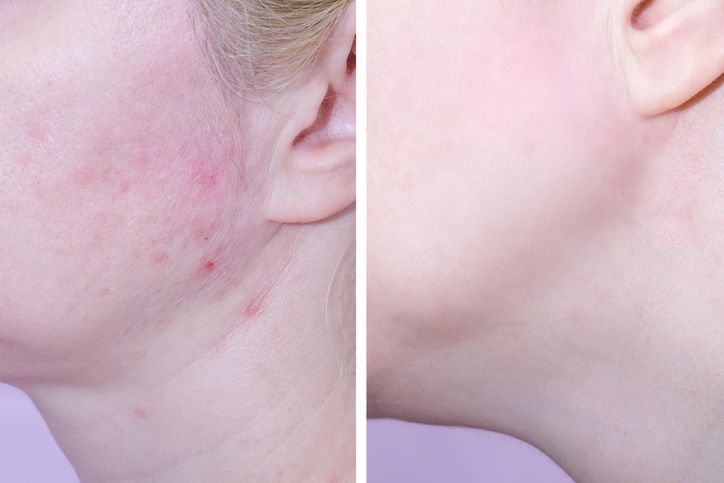
Reduced acne scars
Acne-prone skin is treated with the acne treatment. Vacuum microdermabrasion clears pores, reduces swelling, and hastens the aging process for acne and acne scars.
Fewer acne breakouts
The procedure reduces the appearance of blackheads and acne by hydrating the skin, promoting collagen synthesis, and lowering sebum excretion.
Safe and non-invasive treatment
Therapy for acne is non-invasive and risk-free. In comparison to other treatments, the method does not require incisions, needles, or wounds, and is, for the majority of users, painless.
Professional and caring service
Our therapists will follow up with you after the acne treatment is finished to hear about your feedback. For the best treatment outcomes, our esthetician will create a plan of care just for you.
8
Conclusion
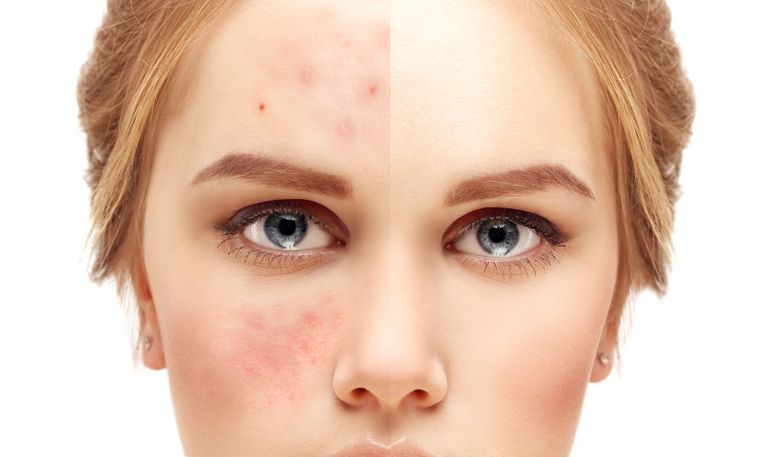
Acne can be affecting mentally and physically for some people. That is why there are many acne treatments available for you. For the best results consult a dermatologist before undergoing a treatment. keep in mind that sometimes it may take sometimes for a treatment to work or sometime you may need to switch to another treatment. Choose whatever works the best for you.
FAQs
Can I undergo two acne treatments at the same time?
Does acne remedy can worsen acne at the beginning?
How do I know whether my treatment is working for me?

Book Now to Experience
Acne Treatment
1 Minute Self-Registration
Date should not be before minimal date
